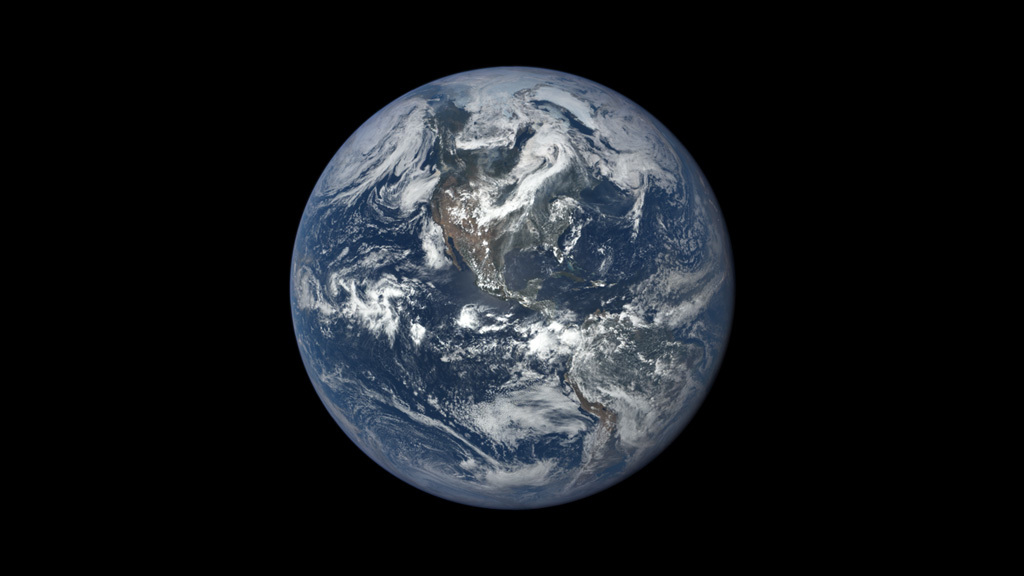One Year In The Life of Earth
On July 20, 2015, NASA released to the world the first image of the sunlit side of Earth captured by the space agency's EPIC camera on NOAA's DSCOVR satellite. The camera has now recorded a full year of life on Earth from its orbit at Lagrange point 1, approximately 1 million miles from Earth, where it is balanced between the gravity of our home planet and the sun.
EPIC takes a new picture every two hours, revealing how the planet would look to human eyes, capturing the ever-changing motion of clouds and weather systems and the fixed features of Earth such as deserts, forests and the distinct blues of different seas. EPIC will allow scientists to monitor ozone and aerosol levels in Earth’s atmosphere, cloud height, vegetation properties and the ultraviolet reflectivity of Earth.
The primary objective of DSCOVR, a partnership between NASA, the National Oceanic and Atmospheric Administration (NOAA) and the U.S. Air Force, is to maintain the nation’s real-time solar wind monitoring capabilities, which are critical to the accuracy and lead time of space weather alerts and forecasts from NOAA.
For more information about DSCOVR, visit: http://www.nesdis.noaa.gov/DSCOVR/. To view all the pictures EPIC has taken, visit https://epic.gsfc.nasa.gov.
Scientist Jay Herman narrates this video showing one year in the life of Earth seen through the lens of NASA's EPIC camera.
Complete transcript available.

A GIF optimized for posting on Twitter.
Suggested tweet: "See what Earth aging one year looks like."
Suggested tweet: "A NASA camera records one year in the life of Earth."
EPIC Earth highlight video for social media.
Run time = 45 sec.
Excerpt of Earth time-lapse for TV weathercasters.
Clip is from May 2016.
Run time = 23 sec.
For More Information
See the following sources:
Credits
Please give credit for this item to:
NASA's Goddard Space Flight Center
-
Producer
- Kayvon Sharghi (USRA)
-
Visualizer
- Joycelyn Thomson Jones (NASA/GSFC)
-
Animator
- Kayvon Sharghi (USRA)
-
Video editor
- Kayvon Sharghi (USRA)
-
Narration
- Kayvon Sharghi (USRA)
-
Narrator
- Jay Herman (NASA/GSFC)
-
Scientists
- Jay Herman (NASA/GSFC)
- Adam Szabo (NASA/GSFC)
- Alexander Marshak (NASA/GSFC)
Release date
This page was originally published on Wednesday, July 20, 2016.
This page was last updated on Monday, July 15, 2024 at 12:12 AM EDT.
![Music: Assumption of Power by Laurent Dury [SACEM]Complete transcript available.](/vis/a010000/a013000/a013056/EPIC2_Goddard_final.00001_print.jpg)
![Music: Crystal Sound Bath by James Alexander Dorman [PRS]Complete transcript available.](/vis/a010000/a012600/a012600/LARGE_MP4-12600_sunglints_large.00737_print.jpg)
